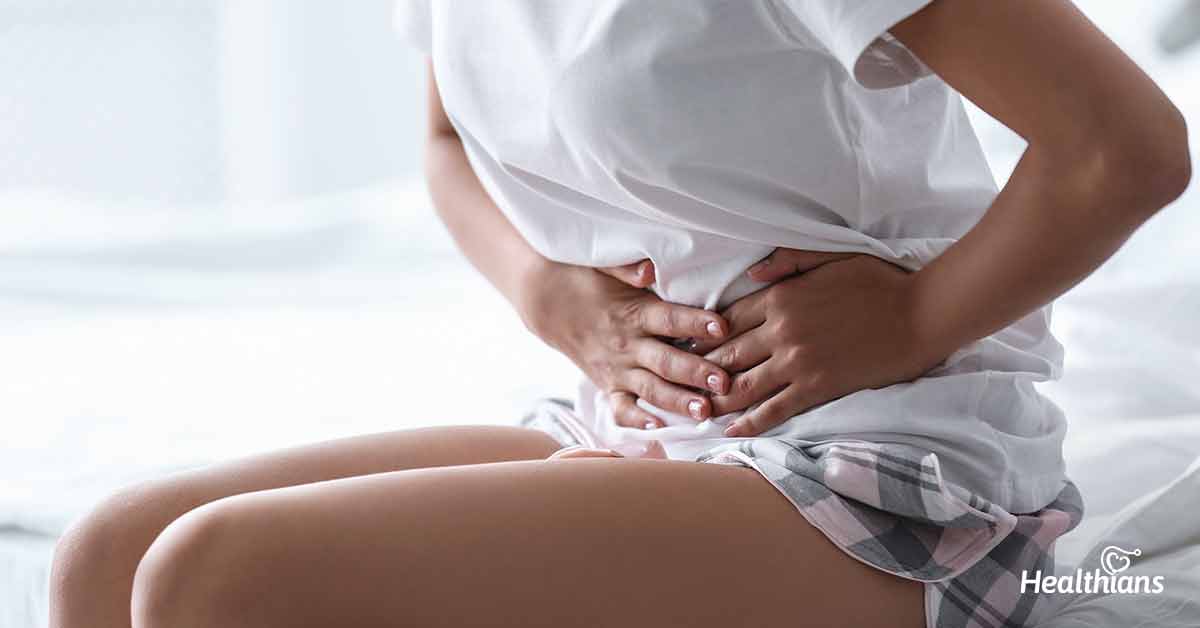Contributed by: Healthians Team
What is endometriosis?
In endometriosis, the tissue that lines the interior of a woman’s uterus (known as the endometrium) grows outside of her uterus on other organs and structures. Endometriosis is most commonly found to be on the following organs:
- Ovaries
- Fallopian tubes
- Ligaments that keep the uterus in its proper position
- The outer wall of the uterus
- Between the uterus and rectum
- Between the uterus and bladder
The vagina, cervix, vulva, bowel, bladder, and rectum are all possible sites for growth. These growths may swell and bleed leak in the same way that her uterine lining does every month when she has her period. Because the tissue grows and bleeds in regions where it can’t easily get out of her body, this might cause swelling and agonizing pain.
Symptoms of endometriosis
Endometriosis can cause a variety of symptoms in a woman. She could have the following experiences:
- Cramping
- Lower back and pelvis pain
- Pain during or after sex
- Intestinal discomfort
Apart from the above symptoms, she may also have bloating, nausea, diarrhea, painful bowel motions, and urination pain, especially during her period.
Myths about endometriosis
There’s a lot of information on endometriosis out there, some of it real, some of it incorrect, and a lot we don’t know, so it can be confusing. Endometriosis is notorious for being plagued by myths and misconceptions, making it difficult for women to fully understand the condition or seek treatment. Because many women are unaware of what endometriosis is and believe that many of the symptoms are “normal,” There is frequently a long period of time between when they first notice symptoms and when they are identified and begin treatment.
Myth #1: It’s natural to have distressing pain during your period
Fact:
It’s natural to experience some discomfort during your period, but it should never be so severe that it prevents you from going about your daily routine. The pain of endometriosis is disabling and has an impact on all parts of your life, including relationships, physical and mental health, work, school, social engagements, and everyday living.
Myth #2: Women with endometriosis experience pain only during periods
Fact:
Endometriosis is considerably more than just painful periods. Endometriosis can cause severe pain and heavy, irregular bleeding during menstruation. Women with endometriosis patients can experience also pain throughout the month.
Myth #3: Women with endometriosis have to live with heavy periods
Fact:
People with endometriosis don’t always have to deal with severe periods or bleeding. Painful, heavy periods, overwhelming fatigue, and other difficult symptoms can make the condition difficult to deal with. There are various hormone medicines that can be used to stop periods or minimize bleeding
Myth #4: Surgery will cure endometriosis
Fact:
Endometriosis is wildly misunderstood and under-researched by the biomedical community. It has no definitive treatment. It can be treated both medically and surgically. Treatment can significantly alleviate symptoms. Surgery is the only way to diagnose endometriosis with certainty, however, it cannot prevent endometriosis tissue from returning.
Myth #5: Tampons cause endometriosis
Fact:
There is no evidence anywhere to support this view. In fact contrary to this myth, a study suggests that tampon use could be one of the strongest protectors against endometriosis.
Myth #6: Pregnancy cures endometriosis
Fact:
Pregnancy cannot treat endometriosis; this is an ancient fallacy based on insufficient evidence. It’s possible that symptoms will fade after having a child, but this isn’t a solution.
Myth #7: The pain is from the uterine tissues, causing internal bleeding
Fact:
Under a microscope, the tissue that makes up endometriosis lesions resembles the uterine lining, but it’s not the same. Many of these painful lesions do not bleed, but they are densely packed with nerves and secrete chemicals that irritate the surrounding tissue.
Myth #8: You have to have severe endometriosis to experience intense pain
Fact:
Each woman’s level of discomfort and pain is different. While some women experience mild or moderate discomfort, others encounter crippling physical pain. Some women go through emotional distress brought on by the unrelenting symptoms of pain. This, however, merely characterizes the size and number of endometriosis lesions present and has no bearing on the amount of pain experienced.
Myth #9: Endometriosis makes you infertile
Fact:
Endometriosis affects 3 to 4 out of every 10 women, making it difficult to conceive. This does not necessarily imply that you are infertile; many people with endo have no trouble conceiving.
Final thoughts
Endometriosis is a complex gynecological condition. Its diagnosis and treatment often require an expert. If you think that you or a loved one may have endometriosis, discuss it with a gynecologist who can help you with your endometriosis-related discomfort.




